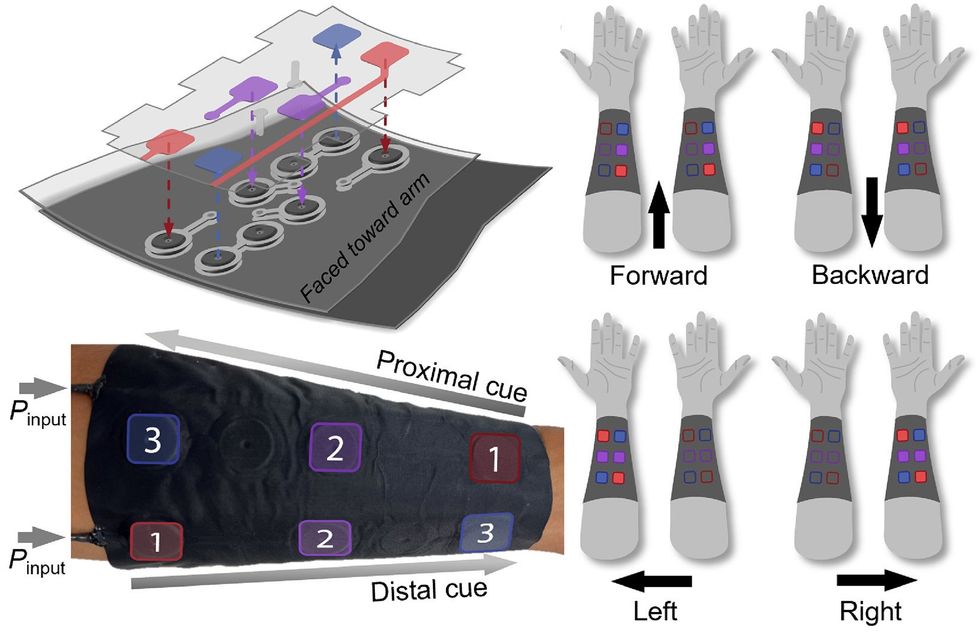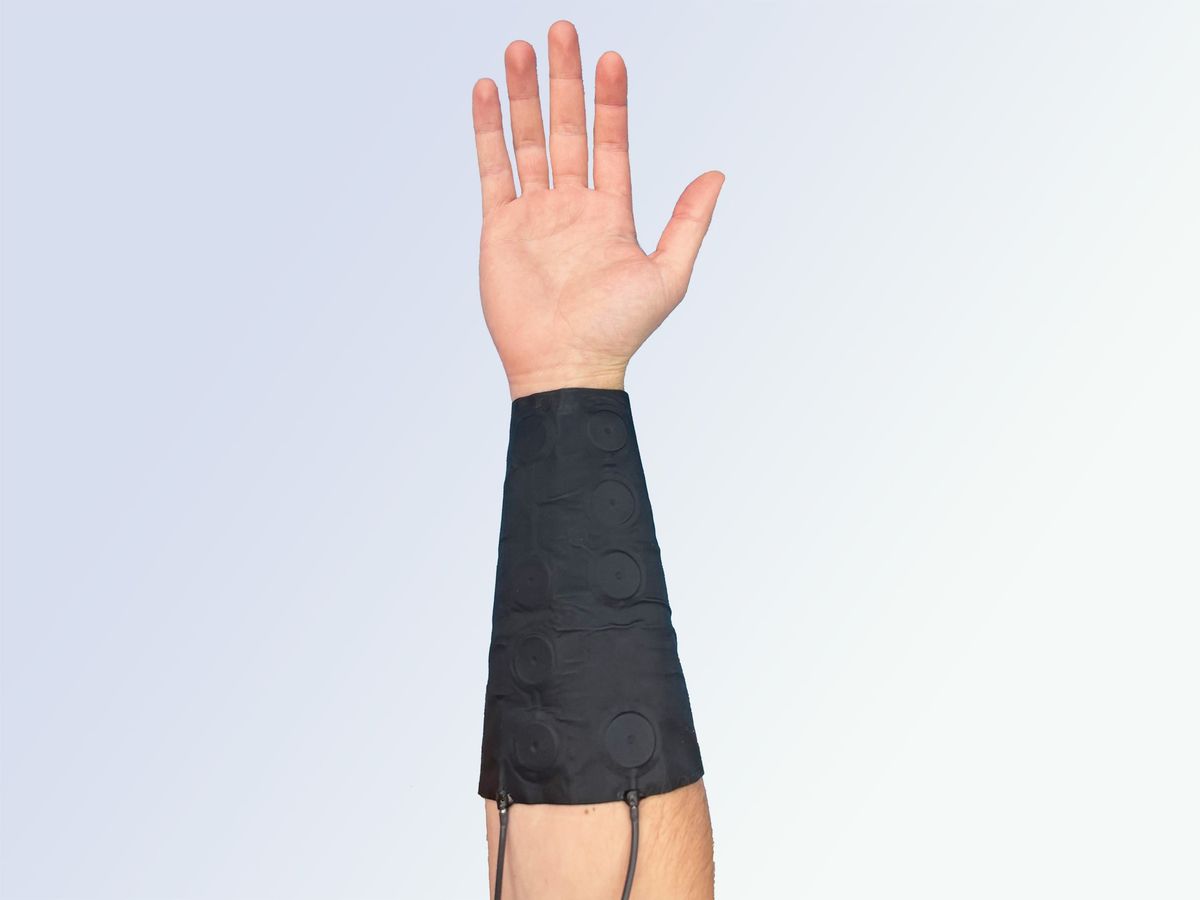Trying to listen to your GPS dictate directions while navigating a busy city or while taking an important work call can be a sensory nightmare. And for the more than 2 billion people with partial or total vision or hearing loss, these navigation systems can be nearly useless.
A team of researchers from Rice University, in Houston, has designed a solution to cut through that noise. Instead of making users watch or listen to directions, the team designed a wearable device that utilizes pneumatic technology to generate small taps on the inside of a wearer’s wrist to silently guide them to their destination.
Daniel Preston, the assistant professor of mechanical engineering at Rice who led the research, says that part of the reason why haptic devices like this aren’t more widely used is because the technology is typically costly and bulky. Generally, they’ve relied on external valves and hardware to generate haptic cues, says Barclay Jumet, a Ph.D. student in Preston’s lab.

To avoid these common pitfalls, Preston and colleagues turned to a technology they call “fluidic programming,” basically fluidic circuits, which use pressure and flow instead of voltage and currents. Such circuits can be integrated directly into wearable textiles, making the haptic solution less bulky and also more intuitive for the user.
“With this work, we were able to create a wearable haptic textile device and reduce much of the bulk that other devices may require because we could embed programming into the fabric itself,” Preston says.
The Rice researchers tested out their design in both a wristband and in a long sleeve shirt. In both cases, the haptic signals were transmitted via little air pockets on the textile that would inflate to signal a change in direction. Pockets on each arm inflating toward a user’s elbow could signal “move forward” whereas all air pockets inflating on only the user’s right arm would mean “turn right.”
“When these regions inflate, they feel similar to a tap of someone’s finger on the body, in the sense that they are soft but easily perceived forces spread over a small area,” Jumet says. “Each of these ‘taps’ can be programmed to trigger at different locations and timings.”
In the lab, users were able to correctly interpret the GPS’s directions with an average accuracy of nearly 90 percent. However, this accuracy jumped to 100 percent when they took the system for a spin in the real world.
In this trial, a lab member navigated through a neighborhood by scooter using haptic signals transmitted through their sleeves. The tester also wore a belt around their waist to carry the device’s wireless receiver and battery pack.
The team also tested the durability of the textiles by repeatedly washing and cutting the fabric. They found that the device remained functional after 25 wash cycles and that a tear to the fabric could be easily repaired by ironing on a patch of the same material.
Thanks to these qualities, Jumet believes that a device like this could be easily integrated into daily life.
“Leveraging the sense of touch in general can help everyone in everyday life, but there are people with clinical deficiencies in their sight and hearing who could benefit greatly by having a third pathway to receive information about their surroundings,” he says. “We envision that our system could be used in day-to-day activities, such as driving a car, or [even] in enhancing entertainment, such as in augmented reality, virtual reality, movies, and games.”
In their future work, the team is now interested in creating interfaces for wearable haptics that can be tailored to individuals and situations. “Our ongoing work is exploring new haptic methodologies and concepts enabled by the wide design space of these haptic textiles,” Jumet says.
The team reported the research on 29 August in the journal Device.
- Wearable Tech Could Help Track Gun Violence ›
- New Indoor Navigation Technologies Work Where GPS Can't - IEEE ... ›
Sarah Wells is a science and technology journalist interested in how innovation and research intersect with our daily lives. She has written for a number of national publications, including Popular Mechanics, Popular Science, and Motherboard.



